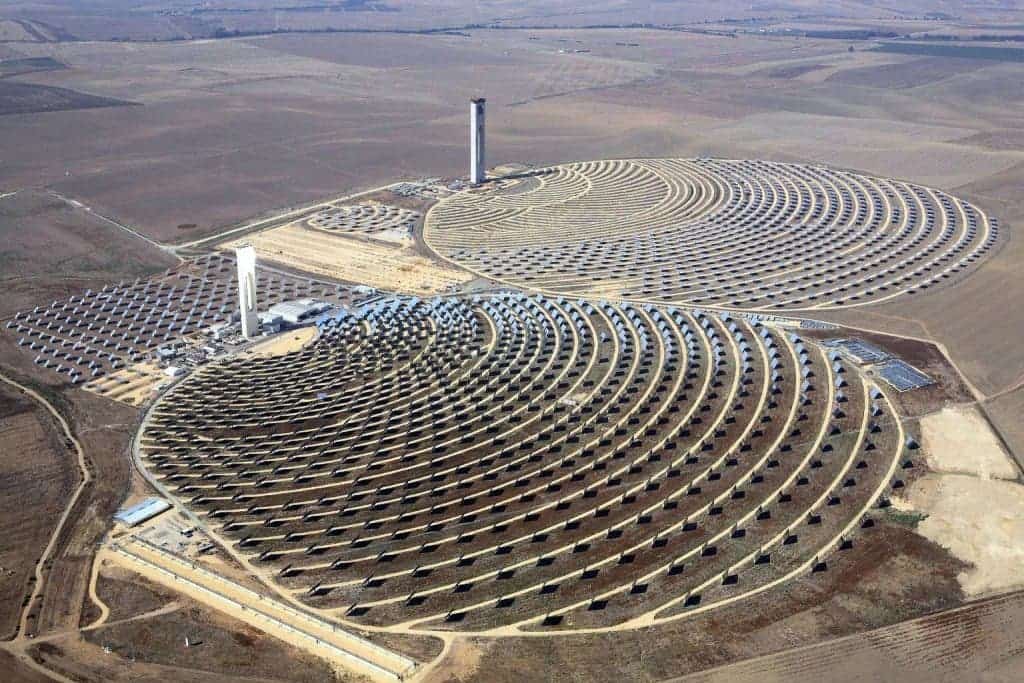At the edge of the Sahara desert, about 120 miles from Marrakesh, Noor I is just the first phase of the massive solar plant. The 160-megawatt concentrated-solar already has 100,000 mirrors in place, focusing sunlight to create steam and generate clean energy.
Morocco announced that it wants to get almost half of its electricity from wind and solar, and they aren’t joking. Noor I is the first of three phases under a plan to create a massive solar complex, supplying 580 megawatts of solar capacity, that will be the largest in the world when finished. It’s estimated that 600 million people in Africa lack access to electricity, and when you consider the kind of sun exposure most areas get — the solution becomes obvious.
Concentrated solar energy works differently from photovoltaics. The system uses an array of mirrors to concentrate sunlight onto a small area. Electricity is generated when the concentrated light is converted to heat, which drives a heat engine (usually a steam turbine) connected to an electrical power generator. If done on a large scale, this can be much more efficient than photovoltaics. By the time the entire plant is completed in 2018, if everything goes according to plan, over 1 million Moroccans will enjoy clean energy from this solar plant. Right now, a capacity of 160 MW has been switched on, but an estimated 500 MW will be fully deployed in two years.
The estimated price will be $0.17 / kwh, which is similar to what residents of New York pay, for example. This energy will also reduce carbon emissions by 760,000 tons per year, thus eliminating an estimated 17.5 million tons of carbon emissions over 25 years.
For Morocco, which got 97% of all their energy from imported fossil fuels, this isn’t only a step to green up their grid, but it’s an economic necessity. Using the sub-Saharan desert area is also beneficial; what the area lacks in soil fertility for agriculture it makes up in solar exposure, making it ideal for such a project.










